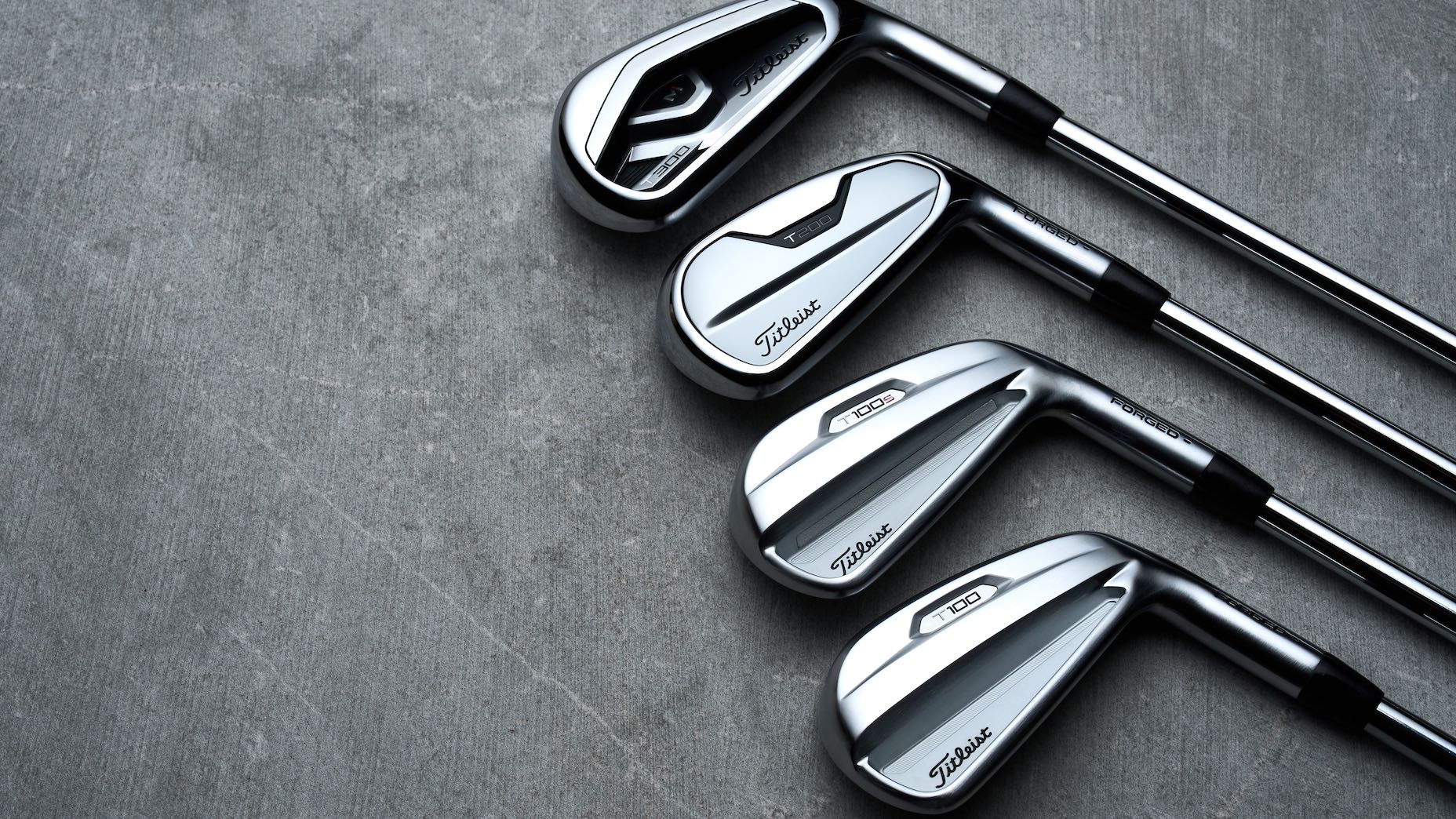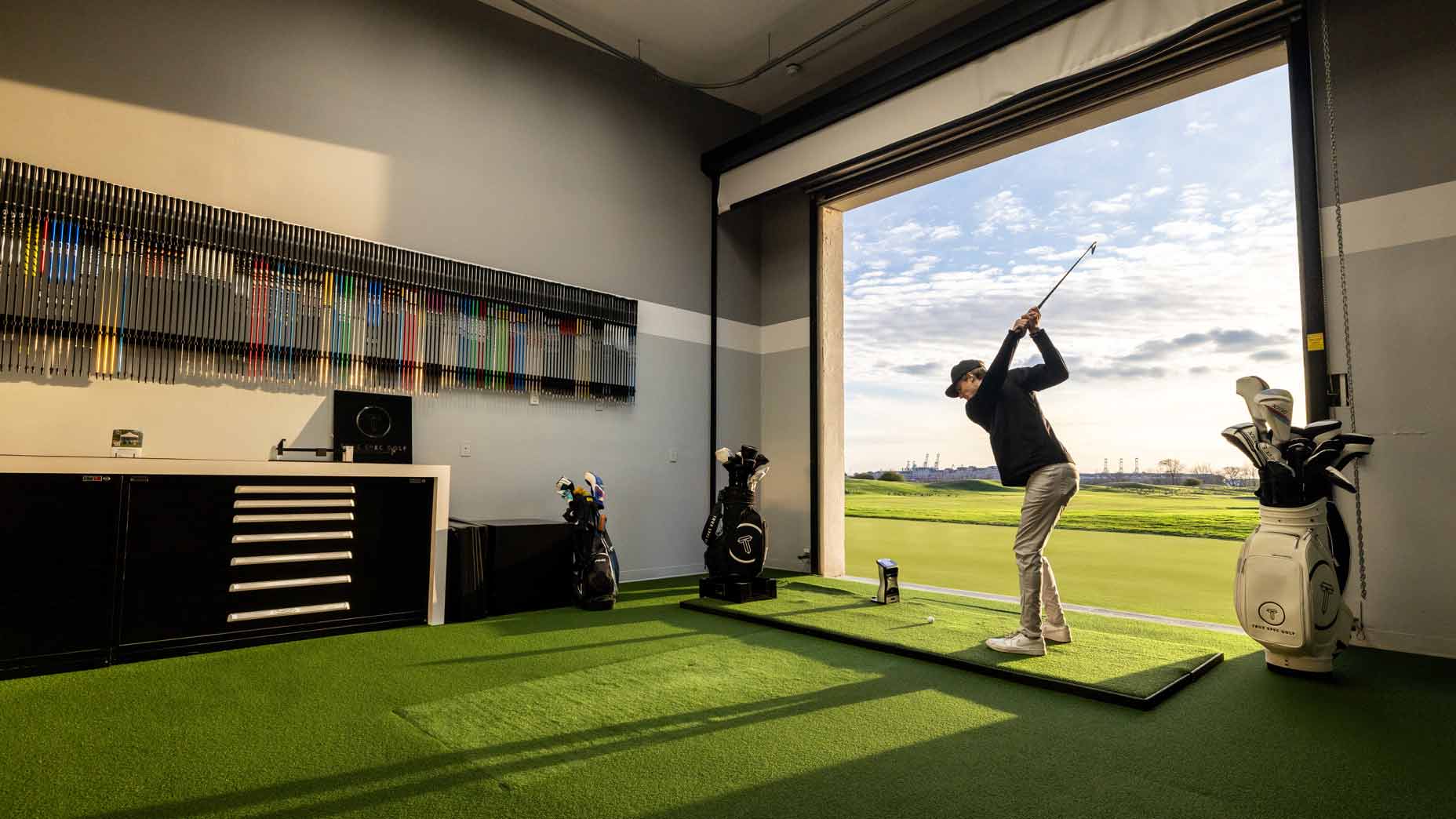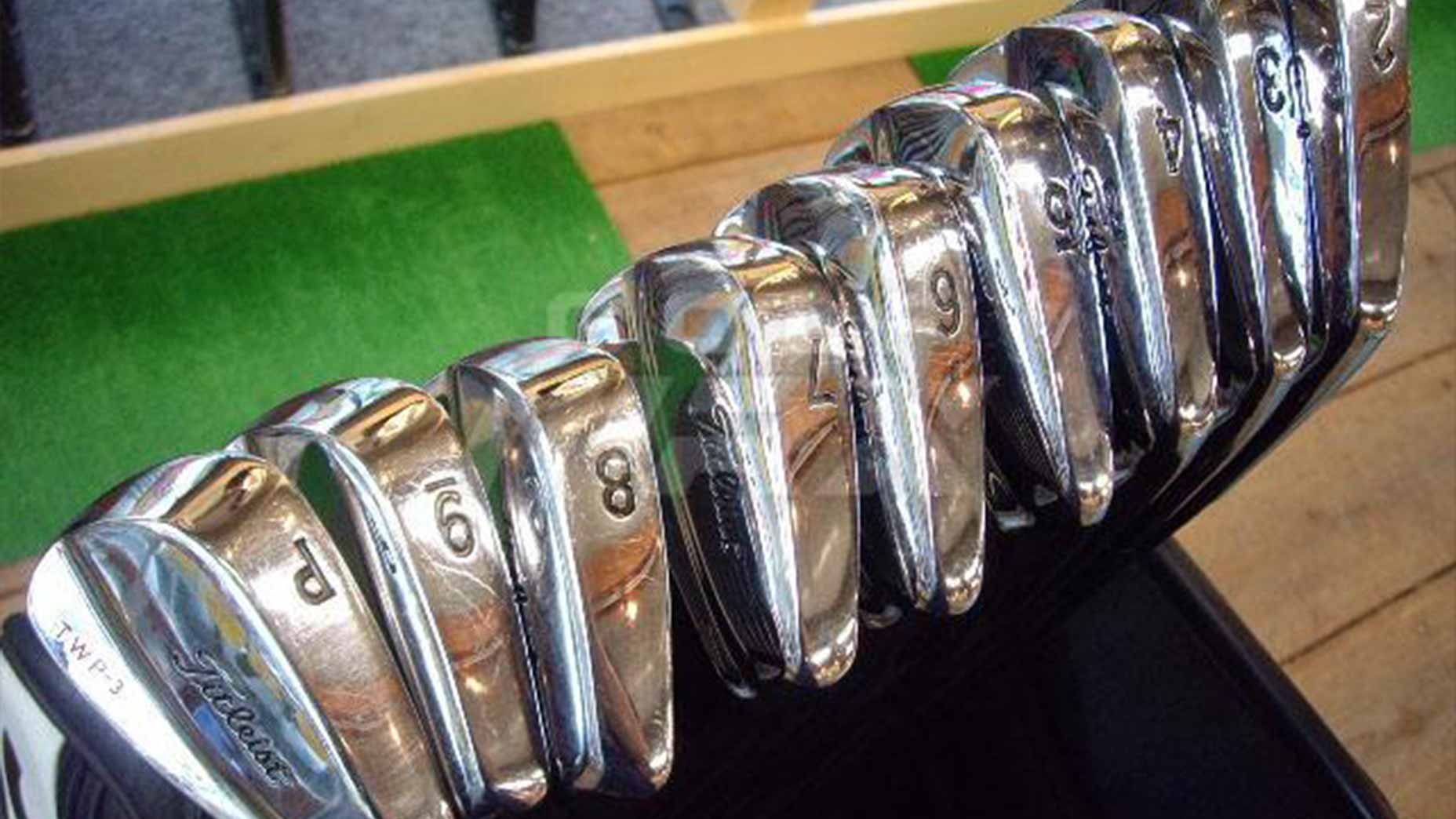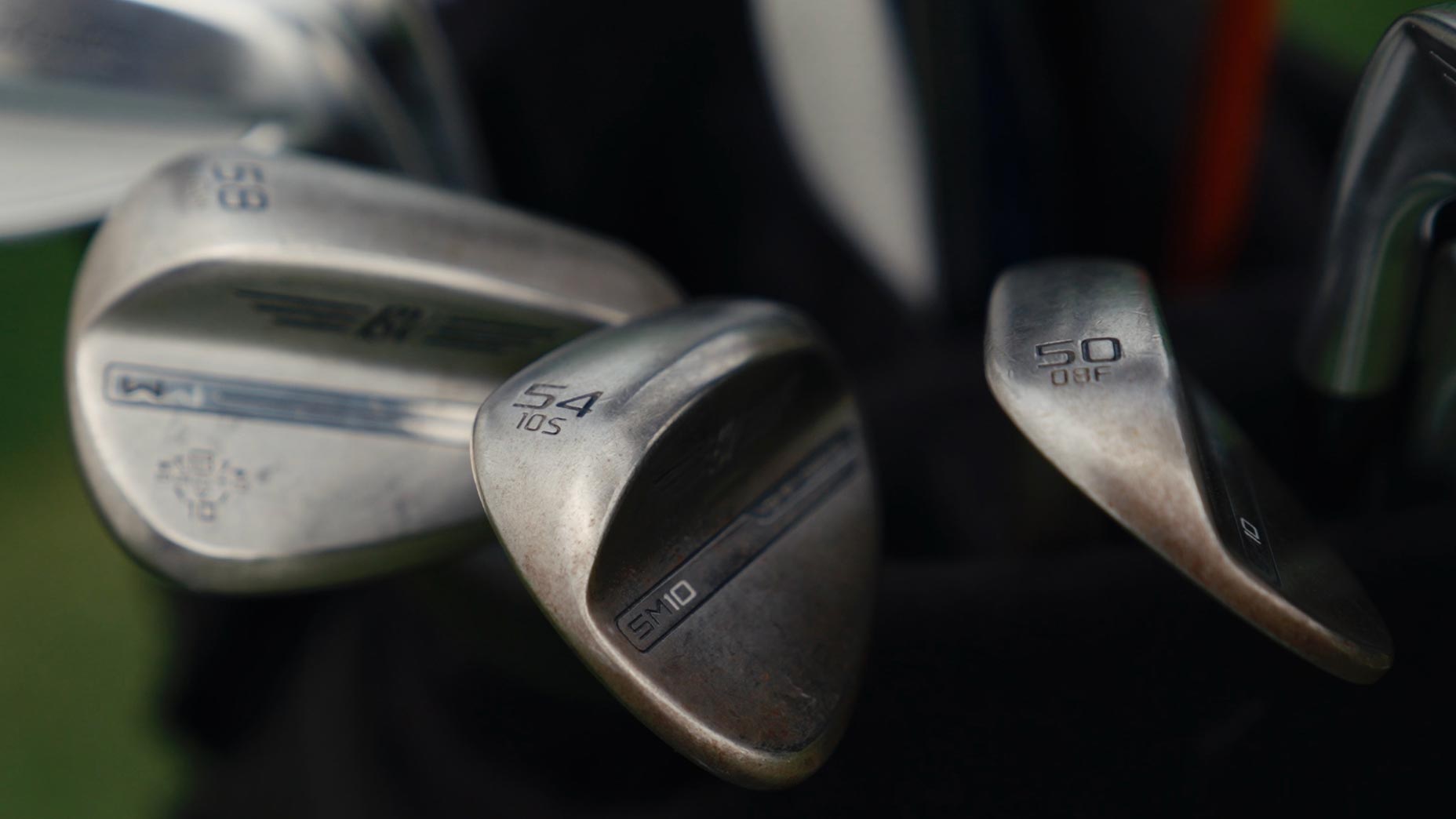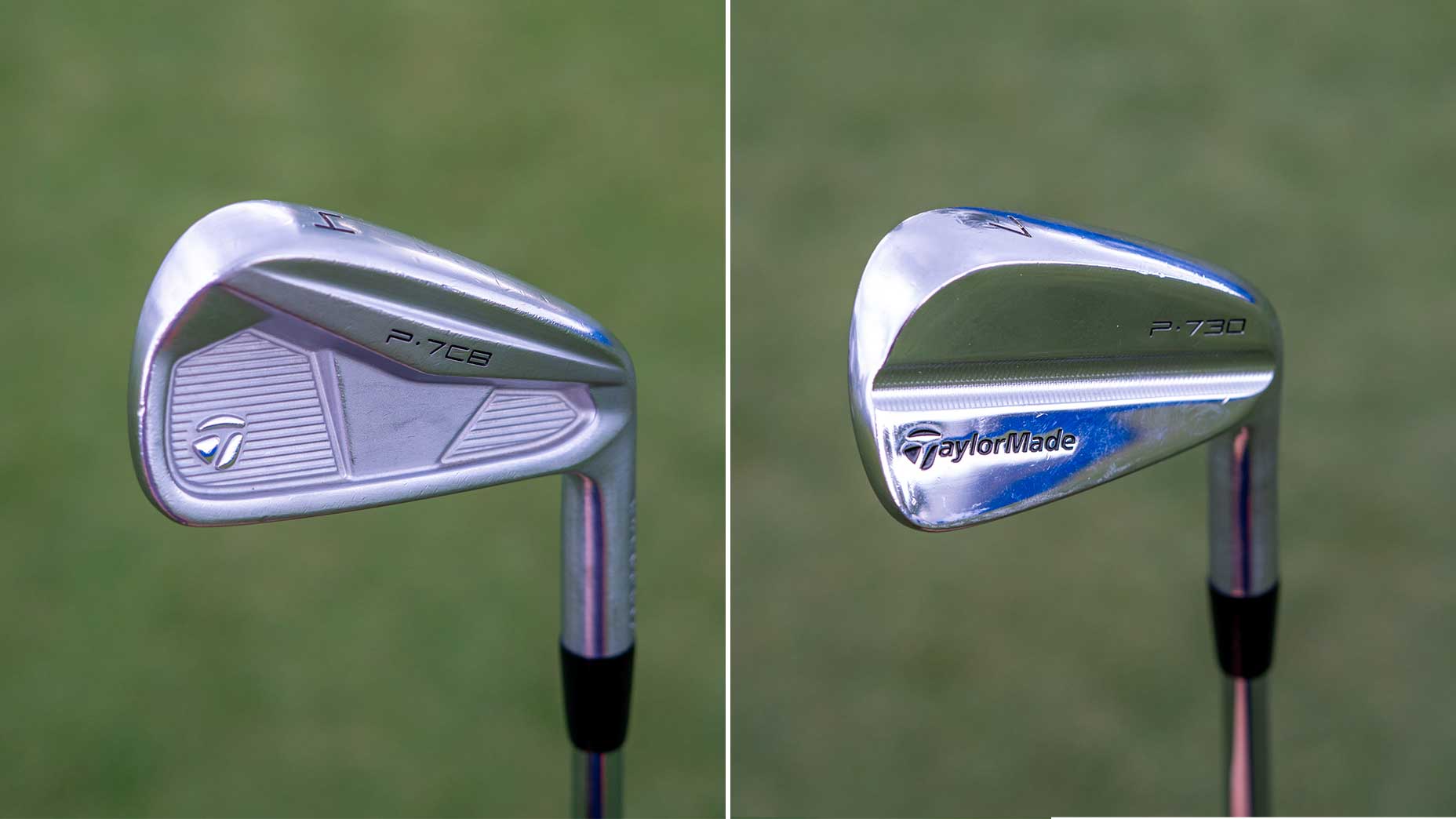Once upon a time, it was generally accepted that professionals and low-handicappers used compact blade-style irons, and higher handicaps were to use game-improvement irons with more forgiveness. In the modern equipment era, however, those lines are becoming blurred as mixed iron sets are more popular than ever.
Even the best PGA Tour pros in the world are now using irons that are built to add forgiveness on off-center hits.
For this article, though, we wanted to find out exactly how much performance variance really exists between iron models that are designed for different purposes. We know that super game-improvement irons are meant to add distance compared to smaller-headed builds…but how much distance exactly? What are the other performance differences between different models?
To figure out those answers, our equipment editors – Jonathan Wall and Andrew Tursky – put each of Titleist’s new 2021 T-Series irons to the test.
FIRST LOOK: Titleist’s new T100, T100S, T200 and T300 ironsBy: Jonathan Wall
Ahead of the official launch of the Titleist irons (T100, T100S, T200 and T300), Wall and Tursky went to the Titleist Performance Institute (TPI) in Oceanside, Calif. There, they hit each of the new T-Series heads under the supervision of TPI’s expert fitters, and each of the iron heads were equipped with Wall and Tursky’s gamer shafts to reduce variables. Every shot was recorded on Titleist’s launch monitor system.
Below, Wall and Tursky break down the results and what you can gather for your own research when deciding between iron models. Remember, you can always mix-and-match iron models throughout your set; you are NOT committed to picking just one model for each iron in your setup.
THE CLUBS WE TESTED
Before we get into the testing results, let’s take a look at the irons tested and some brief technology descriptions. For more information on each of the new designs, don’t forget to read our FIRST LOOK article here.
Titleist T100
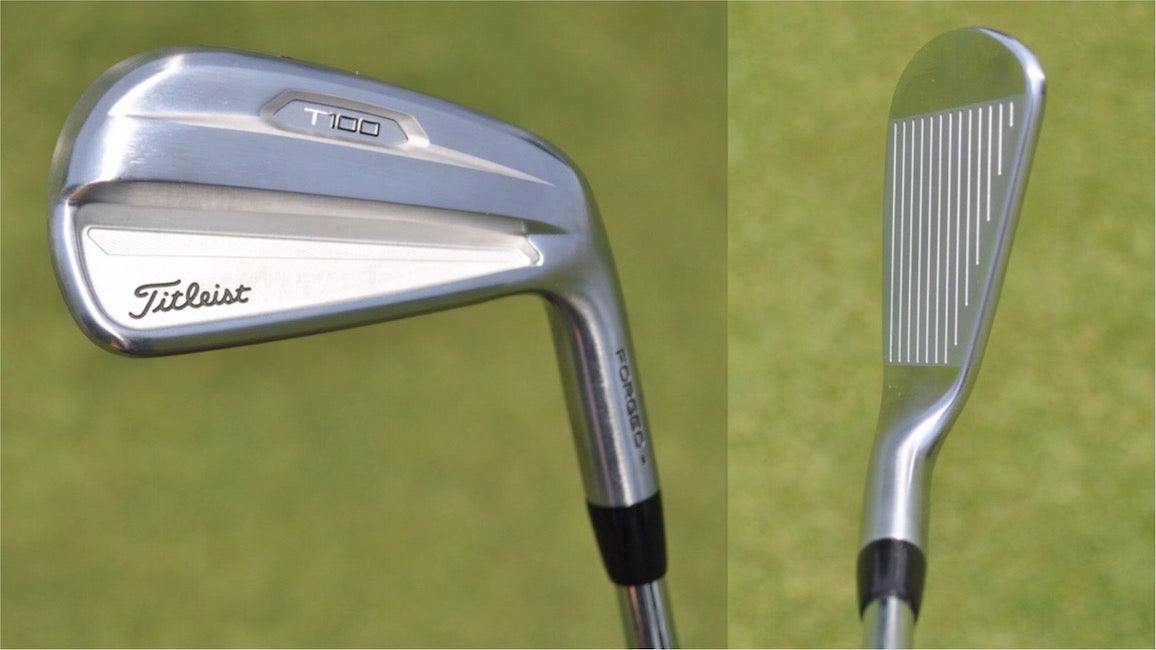
Titleist’s new T100 irons, used by PGA Tour players such as Will Zalatoris and Jordan Spieth, may look like simple cavity back irons, but they’re built with dense Tungsten weights in the toe and heel of the long irons (3-7 irons) for added forgiveness. They also have SUP-10 steel faceplates to enhance ball speed.
Titleist T100S
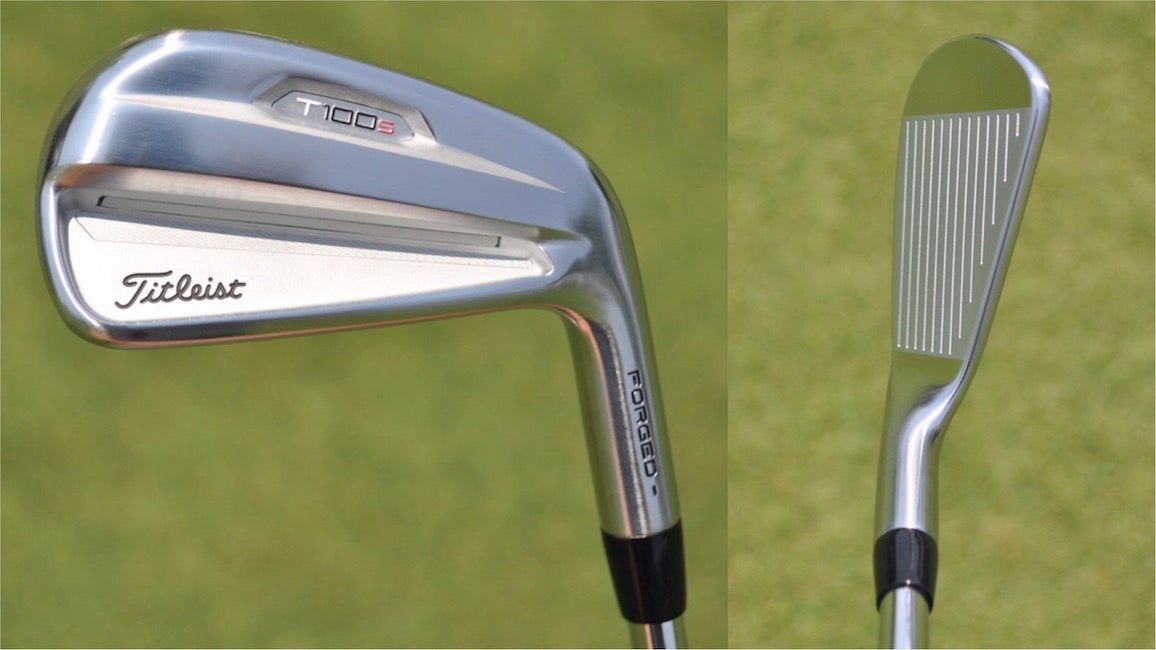
While the T100S irons are similar in design to the T100 irons, the T100S versions are designed to have 2 degrees stronger lofts. For most, that will mean more distance and a lower ball flight. To help boost launch on the longer irons, however, the new T100S irons have a polymer-filled thru-slot in the back portion of the irons.
Titleist T200
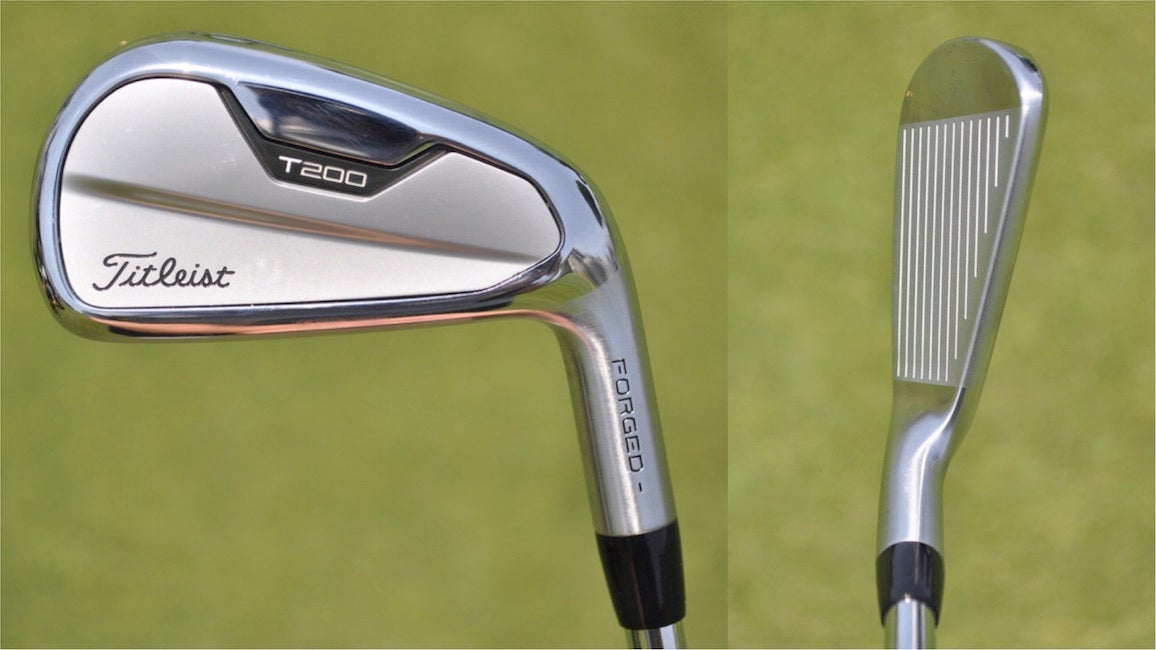
Titleist’s new T200 irons may look clean from the back, but they’re packed with technologies for enhanced distance, forgiveness and speed. They have polymer muscle plates in the back portion of their cavities that help conceal game-improvement technologies, such as internal polymer cores, to achieve that sleek look. The new back plates also help improve sound and feel.
Titleist T300
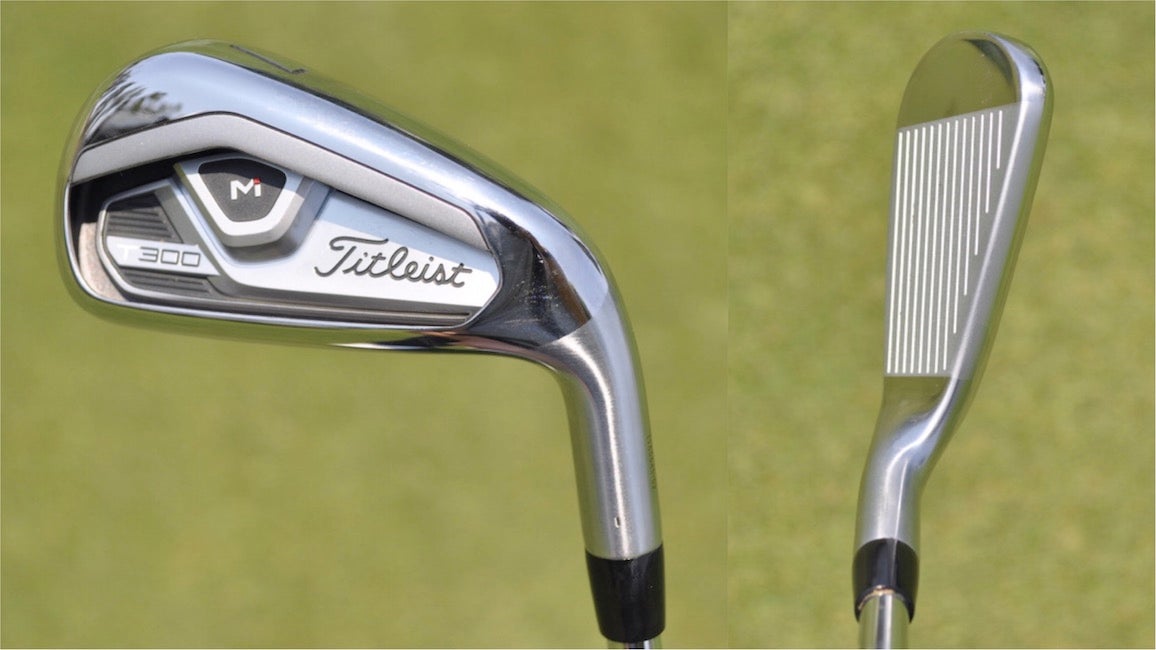
Cast from 17-4 stainless steel, the T300 irons are built for maximum forgiveness and distance in the new T-Series lineup. They have a variable thickness face and a steel cantilever in the back cavity that acts as a trampoline to increase ball speed.
THE RESULTS
Below are the testing results for Wall and Tursky, and their takeaways from the fitting session at TPI. For testing purposes, Wall and Tursky used 7-irons in each of the models throughout the family.
Jonathan Wall: GOLF’s Managing Editor for Equipment (6 handicap)
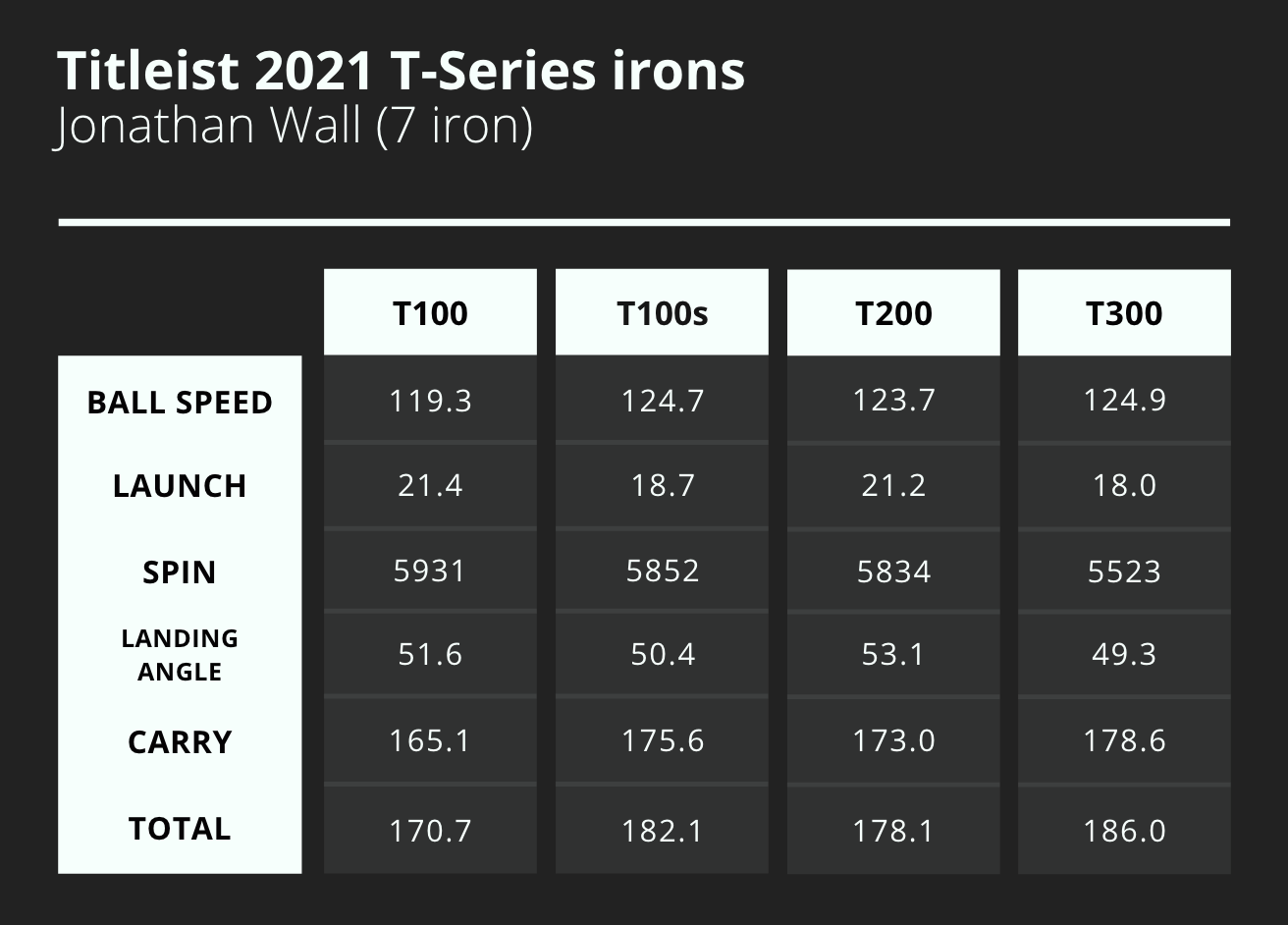
Wall’s analysis: In a perfect world, I would’ve brought my clubs along and conducted a head-to-head test. I don’t see a ton of value in testing a single product in a vacuum; you’re looking at numbers and trying to compare them to what you’ve seen in the past with your gamer set. If you don’t have the ability to bring your sticks along, I think it’s still possible to glean some insights from the session and determine if it’s worth doing further testing down the road.
If you’re wondering why I left my clubs at home, it’s because I’m lazy at times and didn’t want to lug my clubs on the red-eye flight. As someone who recently endured a 45-minute wait at baggage claim for my sticks, it made more sense to leave them at home and conduct additional testing with my trusty Foresight GCQuad in my own time.
With regards to testing, I much prefer working through new irons and wedges outdoors. Hitting on turf gives you a much better idea of turf interaction, which can make or break a potential gamer. Thankfully, TPI (Titleist Performance Institute) in Oceanside, California is all turf and offers one of the nicest practice areas in the country. (I’d build a residence on site if they’d let me.)
I generally start out testing an iron by taking 60 percent half swings to get a general idea of how the club goes through the turf. As a picker of the golf ball, I want to make sure the club isn’t digging in the heel or toe with a simple swing. If something feels off, I’ll still hit some full shots to figure out if it’s user error or simply a grind that isn’t built for my swing. That said, turf interaction is tops on my list of dealbreakers, so if something feels off, I’m out.
From there, I’m looking at offset and the overall profile. As a former plus-handicap who now struggles to play on a consistent basis, I actually prefer some semblance of offset over a leading edge that’s dead flush with the hosel. So long as it doesn’t look like a shovel, I’m more than willing to give anything that sits in the 4 to 10 handicap range a shot.
With a full set of Mizuno JPX 919 Forged (4-PW) currently in the bag, I was intrigued by the idea of putting together a blended set that gave me a slightly smaller profile in the short irons and a similar amount of forgiveness (compared to 919 Forged) in the long irons. Early testing with the T100 produced similar numbers to what I currently see with the 919 Forged, which wasn’t a bad thing. I’m used to a 170-yard 7-iron, but as I continue to creep past the midway point of my 30s, I’ve started to warm to the idea of adding a bit more distance. What I don’t want to do is go to a large profile.
The T100S was without question the biggest surprise for me. As someone who assumed the new S was simply a reboot of the previous version that offered 2-degree stronger lofts across the board, I found a slightly more penetrating launch, a touch less spin and an impressive amount of ball speed.
As a high launch and spin guy, these are numbers that I’ll take to the bank all day long. Not to mention I’m now getting one club less into the green — with a slightly smaller profile.
Compare the T100S to the T300 (a true game-improvement iron) and you’ll see what loading up a head with tungsten can do for your game. Because the T100S is on the smaller side, I chose to break my set at the 6-iron and go with T200 in the 4-iron and 5-iron. Having forgiveness at the top of the set can tighten up your dispersion patterns; I also liked the similar turf to T100S and slimmed-down look, which seemed to fit well from a visual standpoint with the rest of the set.
Something I didn’t consider until “Crazy Uncle Glenn” (a.k.a Titleist master fitter Glenn Mahler) stopped by my testing session was how an extra 10-12 yards of carry would affect the rest of my bag.
“You probably don’t want to stick with a 6-yard gap from the 44-degree pitching wedge to the 50,” he said. “That could present some problems down the road you don’t want to deal with.”
Glenn’s words were a good reminder that you shouldn’t default to the same wedge setup. It’s important to look at your entire bag to determine if changes need to be made at the top or bottom of the set. The last thing you want is a large gap that forces you to constantly lay off or step on a club to hit a certain number. In my case, our chat led me to believe my old three-wedge setup (50, 54, 58) would need to be adjusted to four wedges (48, 52, 56, 60) to account for the 44-degree pitching wedge.
It highlights the importance of working with a certified fitter who can target those blind spots during testing.
Andrew Tursky: GOLF’s Senior Editor for Equipment (2 handicap)

Tursky’s analysis: When I’m testing out new irons, the first thing I look at is the shape of the iron heads at address. As someone who suffers from a hook, too much offset in an iron doesn’t look comfortable to my eye. For those who tend to slice the ball, though, more offset can be a savior. I also look at the topline. I don’t want the topline thickness to be too beefy, but I don’t mind looking at a bit of metal up top either. Typically, a slightly thicker topline than a blade is perfect.
As far as these nit-picky details are concerned, the T100, T100S and T200 irons passed my eye test. I initially thought the T200 irons would have a bit too much offset for my eye, but Titleist’s design team did a great job matching up the looks of the T100 and T100S with the T200. It’s no wonder why PGA Tour pros such as Cam Davis and Justin Thomas put T200 long irons in play; they look similar to the T100 irons, but still offer added performance technologies.
Moving on from the looks, the next thing I’m looking at is the window that the ball comes out. I don’t want the ball launching too low, because then I’ll struggle holding the green, and I don’t want it too high. because I’ll lose control in windy conditions. All of the irons achieved launch angles between 14.4 and 15.2 degrees, and landing angles between 47.9 and 48.9 degrees. That’s just about the wheelhouse I’m looking for.
Next up, I’m looking at the divot pattern. Is one of the iron models digging too much? The answer to that question was “no.” There were no glaring issues with turf interaction. It should be noted, though, that the T300 irons have much thicker soles that will help higher-handicap golfers get the ball airborne more easily. Wider soles will also keep the sole from digging too much in the turf. I personally preferred the turf interaction of the T100 and T100S irons since they have soles that are a bit more narrow, but that’s purely based on my particular swing and preference.
OK, now to the numbers.
My biggest takeaway from the results is that each of the Titleist irons did what they’re designed to do. The T100 irons offered the most spin and the shortest distances, while the T300 produced the lowest spin and the most distance. Between those two models, the T300 flew 19.3 yards farther than the T100 irons.
With irons, though, distance isn’t always everything. My goal is to hit iron shots the same distance every time, not necessarily the longest distance possible. If your particular problem is with height, distance or forgiveness, I absolutely recommend checking out the T300 irons.
For myself, the Titleist fitter recommended a blend of three different iron models. That meant going with T100 mid-and-short irons (6-PW), a T100S 5 iron, and a T200 4-iron. It’s not always easy deciding where to make the cutoff between models within an iron set; that’s why professional fittings help so much! What I found out, though, is that the T100S helped me boost ball speed, which was most useful at the 5 iron where I needed a bit of assistance. With the 4 iron, I needed even more forgiveness and height. That’s why the T200 was the perfect fit for a long-iron replacement. I must also say that the new 2021 T200 iron models have a significantly better feel and sound compared to the previous iteration. I wouldn’t have minded at all if the fitter recommended T200 irons throughout the entire set.
The goal with yardage gapping within your iron set is to have about a 5 mph average ball speed difference, or about 10-15 yards. For example, if your 5-iron only goes 7 yards farther than your 6-iron on average, then you’re essentially wasting space in your bag. Likewise, if your 5-iron goes 20 yards farther than your 6-iron, you’re dealing with a large gap that leave you with those uncomfortable “tweener” yardages too often.
The true takeaway from this test is to get fit, because analyzing performance differences for your own game is difficult, and it’s easy to make biased decisions. The iron that you want to play doesn’t always match with the irons you should play.
Want to overhaul your bag for 2021? Find a fitting location near you at GOLF’s affiliate company True Spec Golf. For more on the latest gear news and information, check out our latest Fully Equipped podcast below!

